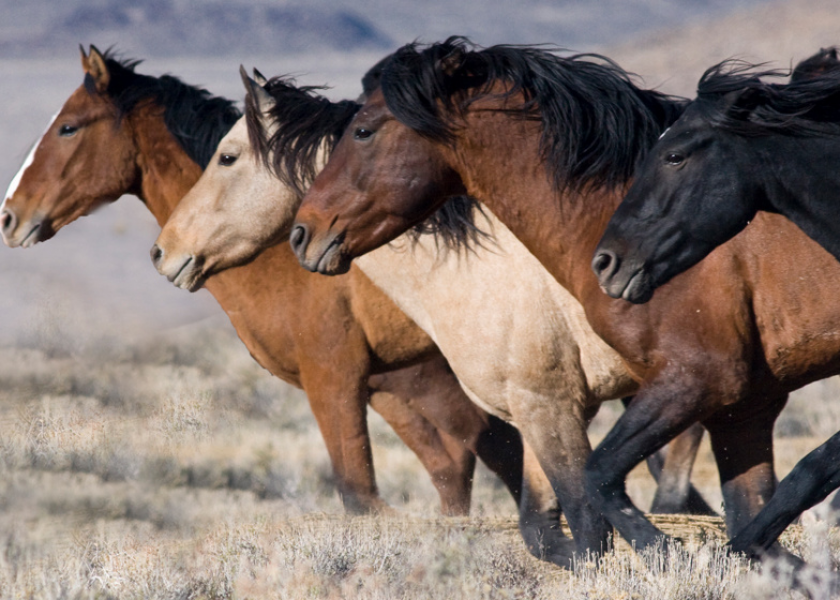Nalivka: Wild Horse Management And Costs Gone Awry

My head nearly exploded when I read that in a recent decision, a judge in eastern Oregon awarded $180,000 in litigation costs to groups of animal rights advocates in a wild horse lawsuit. What?! Simply put, the issue of wild horses, from the perspective of both management and litigation, has gone awry. Further, the problem does not appear to be moving toward a practical solution – at least not from my economist’s viewpoint.
Wild horses involve the Bureau of Land Management (BLM), ranchers, environmentalists, animal welfare advocates, attorneys, judges, and people who are maybe just “interested” parties. Does anyone really think that you can get all of those different parties into one room, probably a court room, to discuss the problem and that they will find a resolution acceptable to all? I have observed, and at times been very close to this issue for the past 40 years and have come to the conclusion that solutions are likely not looming in the near future.
Briefly, the litigation costs in the recent case were incurred by animal rights advocates to stop the BLM from experimenting in sterilizing mares in bands of wild horses in Harney County, Oregon. Rather than fight the immediate lawsuit filed to stop this program, the BLM ultimately simply removed the horses and abandoned their experiment.
The BLM estimates there are currently about 95,000 wild horses and burros on Federal ranges across the western U.S. While we can debate the definition of wild horses, the important point is that those 95,000 horses generated a great deal of litigation, taxpayer cost, and range depredation since 1971 when the Wild Horse and Burro Act was signed into law. If left to their better judgement and science, I might give the BLM the benefit of the doubt to manage the horses so as to limit the impact on the taxpayer and to the range.
However, that has not been the case, particularly when the “Cattle Free by ‘93” crowd is brought into the debate. The wild horses have only provided fodder to their argument of taking cattle off the Federal rangelands. Ironically, those same horses in the numbers expressed above are also most assuredly damaging the range. There are ranges across the West that definitely are testament to that damage.
I am not optimistic that there will be a solution to this issue in the near future. Thirty years ago, I provided testimony on the economic impact of wild horses on one ranch in Nevada. The circumstances allowed for actual cost data that could be presented to a court. Winning that case was a win-win situation, both in terms of ranch cost and rangeland health. That same scenario needs to be replicated many times over as the wild horse population only grows larger.
Further reading: The Wild Horse Wars in the Washington Post.







